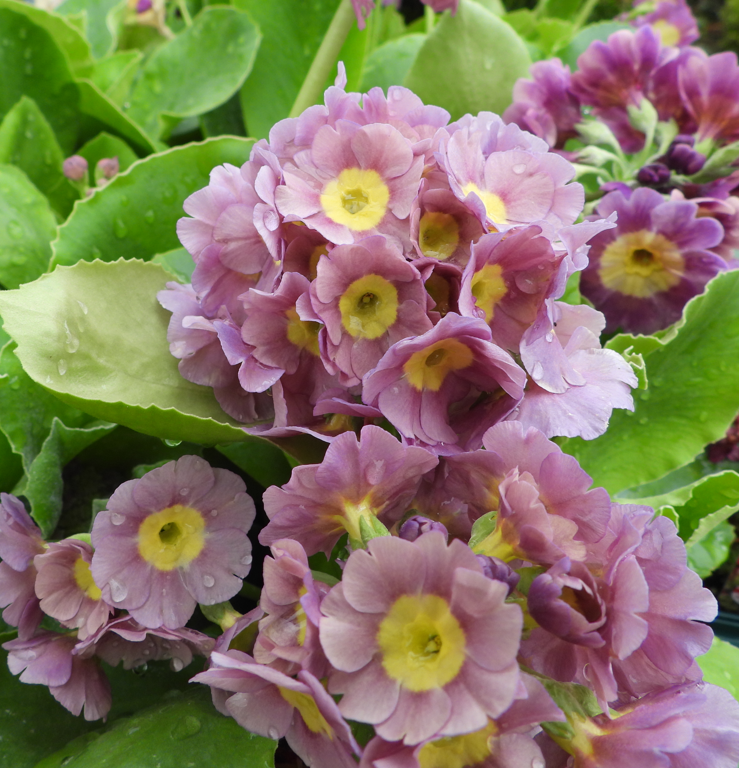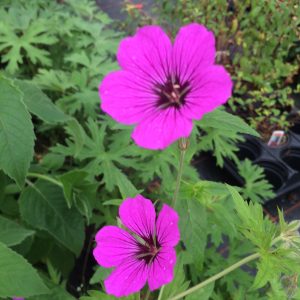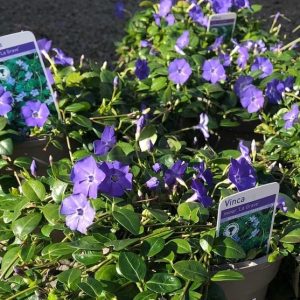Primula auricula
Bears Ears.
Mixed colours.
Primula auricula are well known for the showy, lacy flower clusters, often displayed in clay pots in “Theatres”
An alpine primula with evergreen rosettes of rounded, sometimes felted green leaves.
Showy clusters of flowers in spring. Flowers March to May. Max Height 15cm to 20cm. Max Spread 15cm.
Full sun/partial shade. Hardy.
MORE
Growing auricula plants can be a rewarding hobby for gardeners and plant enthusiasts. The plants are relatively easy to care for and can provide a beautiful display of color in the garden or on a windowsill. They can be propagated by division, by seed, or by leaf cuttings, and are relatively low-maintenance once established. They do require good drainage, however, as they are susceptible to rot in wet soil.
Primula auricula, commonly known as the auricula or mountain cowslip, is a species of flowering plant in the family Primulaceae. This alpine plant is native to the mountainous regions of central Europe, particularly the Alps, where it can be found growing in rocky crevices and screes. The plant is known for its striking, brightly colored flowers and its adaptability to a variety of growing conditions.
The auricula plant typically grows to a height of 15-30 cm and has a rosette of leathery, evergreen leaves. The leaves are usually oval-shaped and can be up to 15 cm long. The flowers are borne on long, slender stalks and are usually arranged in clusters of 2-5 blooms. The flowers themselves are funnel-shaped and can be up to 5 cm in diameter. They come in a range of colors, including yellow, orange, red, pink, purple, blue, and white, and often have a contrasting eye or edge.
Auricula plants are often grown as ornamental plants in gardens and are popular with plant collectors. They can be grown in pots or containers, as well as in garden beds. The plants prefer well-drained soil and partial shade, although they can also tolerate full sun if given enough water. They are hardy and can withstand frost, making them ideal for colder climates.
One of the most interesting features of the auricula plant is its historical significance. The plant has been cultivated in Europe for hundreds of years and has been the subject of much fascination and devotion. In the 18th and 19th centuries, auricula growing was a popular hobby in England, and enthusiasts would gather for shows and competitions to display their plants. The plants were prized for their beauty and rarity, and were often given elaborate names that reflected their colors or origins.
Auricula plants have also been used for medicinal purposes throughout history. The plant was traditionally used to treat respiratory ailments, such as asthma and bronchitis, as well as digestive disorders and skin conditions. The plant contains various alkaloids, saponins, and flavonoids that are thought to have medicinal properties.
Today, the auricula plant is still popular with gardeners and plant collectors, and there are many varieties and cultivars available. Some of the most popular cultivars include the Alpen Glow, which has bright orange-red flowers with a yellow center, and the Masterpiece, which has large, ruffled flowers in shades of purple and pink. There are also double-flowered varieties, which have extra petals and a fuller appearance, and striped or edged varieties, which have contrasting colors on the edges or tips of the petals.
In conclusion, Primula auricula is a beautiful and fascinating plant with a rich history and cultural significance. Its brightly colored flowers and adaptability to a range of growing conditions make it a popular choice for gardeners and plant collectors, while its medicinal properties and historical significance add to its appeal. Whether grown for its beauty or its history, the auricula plant is a valuable addition to any garden or collection.





Reviews
There are no reviews yet.